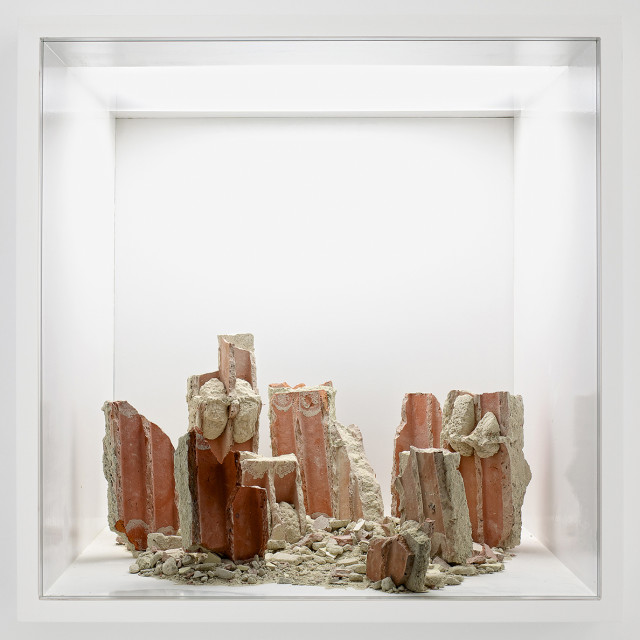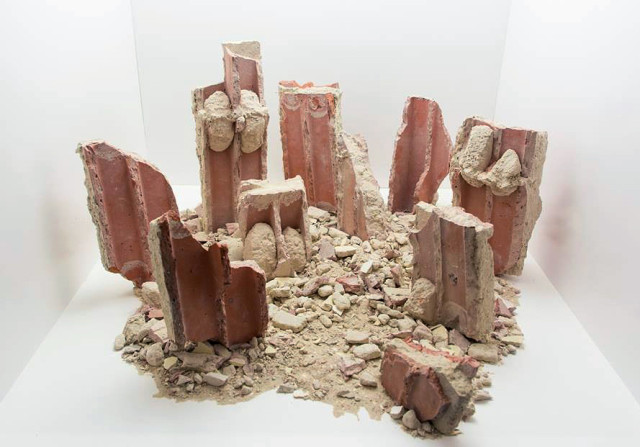

Zvi Hecker is known for his unique forms on the scale of architecture. The departure point for this work was the destruction of the wall between two rooms which will become a neighbouring project space, downstairs from the gallery.
Upon seeing the rubble Hecker was impressed with the uniqueness of the forms which in his opinion cannot be replicated without precise handiwork. The raw pieces of this wall, fragmented bricks caked with cement, in the pristine white cube of Der Würfel is a stark contrast to what architecture represents.
–
Zvi Hecker ist bekannt für seine einzigartigen Formen im Maßstab der Architektur. Der Abriss einer Mauer zwischen zwei Räumen eines benachbarten Projektraums war der Ausgangspunkt seiner Arbeit für den ,Würfel‘.
Als Zvi Hecker den Schutt sah, war er sehr von der Einzigartigkeit der Formen beeindruckt, die seiner Meinung nach nur durch absolute handwerkliche Präzision wieder hergestellt werden könnten. Die rohen Stücke der Mauer, zerbrochene Ziegelsteine mit Zement verbacken, die in dem Makellosen ,white cube‘, des Würfel zu sehen sind, bilden einen starken Kontrast zu dem was Architektur normalerweise repräsentiert.
–
Zvi Hecker, Krakow, 1931 – lives in Berlin. Solo exhibitions include; The Thinking Eye – Galerie Nordenhake, Berlin [2013]; Tel Aviv Museum of Art, Tel Aviv [1980s and 1996]; Israel Museum, Jerusalem [1976]. Hecker represented Israel at the 5th Venice Biennale of Architecture [1995]. Group exhibitions include; Jewish Identity in Contemporary Architecture – Jewish Museum, Berlin [2005], 7th Venice Biennale of Architecture [2000] and 6th Venice Biennale of Architecture [1996]. He studied painting at the Avni Institute of Art and Design, Tel Aviv, 1957 and graduated with degree in Architecture from Technion – Israel Institute of Technology, Haifa 1955.
Hecker has won a number of architectural competitions and was awarded the Rechter prize for architecture in Tel-Aviv 1999 and the German Critic Prize for architecture 1996.
–